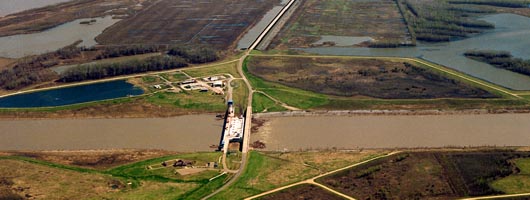
HSR Modeling Thoery
The principle behind the use of a hydraulic sediment response model is similitude, the linking of parameters between a model and prototype so that behavior in one can predict behavior in the other.
There are two different types of similitude; mathematical similitude and empirical similitude. Mathematical similitude is founded on the scale relationship between all linear dimensions (geometric similarity), a scale relationship between all components of velocity (kinematic), or both geometric and kinematic similarity with the ratio of all common point forces equal (dynamic similarity).
In contrast to mathematical similitude, empirical similitude is based on the belief that the laws of mathematical similitude can be relaxed as long as other more fundamental relationships are preserved between the model and the prototype. All physical models used in the past by USACE employed, to some degree, empirical similitude. Numerous definitions of what relationships must be preserved have been put forward concerning physical sediment models. These relationships often deal with the scalability of elements of sediment transport processes or surface or structure roughness. Hydraulic sediment response models depend on similitude in the morphologic response, i.e. the ability of the model to replicate known prototype parameters associated with the bed response in the river under study. Bed response includes thalweg location, scour and deposition within the channel and at various river structures, and the overall resultant bed configuration. These parameters are directly compared to what is observed from prototype surveys.
Detailed cross-sectional analysis of prototype and model surveys defining bed response and bed configuration have shown that HSR model variation from the prototype is often approximately that of the natural variation observed in the prototype. This correspondence allows hydraulic engineers to use the HSR model with confidence and introduce alternatives in the model to approximate the bed response that can be expected to occur in the prototype.
HSR models were developed from empirical large scale coal bed models utilized by the USACE Waterways Experiment Station (Environmental Research and Development Center). These models were used by MVS from 1940 to the mid 1990s. For a more thorough explanation of the HSR model development, please refer to the following link:
